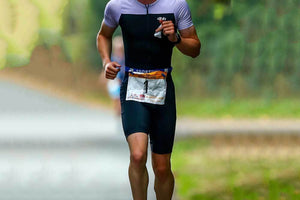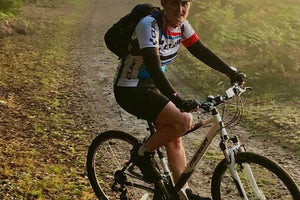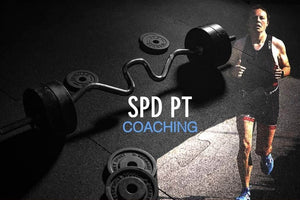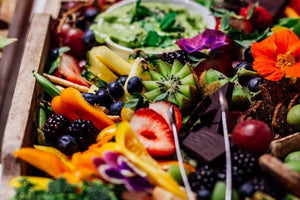Whether you are a competitive athlete or a recreational sports enthusiast, it’s imperative to fuel your body appropriately. We’ve all read articles about consuming enough protein for muscle growth and repair, eating enough carbohydrates to fuel our training, and choosing drinks with added electrolytes to stay hydrated. What we often neglect to consider is the impact that our diet is having on the planet and how we can eat a more sustainable diet whilst not impacting our performance.
The food we eat contributes to around 30% of greenhouse gas emissions globally and if we don’t take action this figure will continue to grow. To help tackle this issue I have put together my top ten tips for eating your way to sustainability whilst still maintaining the golden ‘rules’ of what an athlete needs to consume in order to perform.
Moderate animal produce
Animal foods have a much larger carbon and water footprint than plant foods. In today’s modern agriculture, we grow plants to feed animals which are inefficient converters of plant matter into food. By cutting out the animals and eating those plants directly we can dramatically reduce our carbon footprint.
You don’t have to take the pledge of veganism to do your part for the environment. Try and make some simple swaps to plant based meat and dairy alternatives which are packed with protein and fortified with essential vitamins and minerals. Whether you opt for meatless Mondays or choose to have one plant-based meal each day, every little will help!
Locally source seasonal fruit and vegetables
Foods that travel long distances have a high environmental impact. Buying seasonal fruit and vegetables from your local market can help to lower your carbon footprint whilst contributing to your local economy. If you can’t live without certain foods in their off season, opt for preserved foods that are lightly processed. Canned and frozen fruit and vegetables are more sustainable than the produce grown in a heated greenhouse or shipped in from another country.
Waste less food
The average household wastes around 30% of the food it buys. A vast number of resources are used to produce food that is never eaten- soil, water fossil fuels, crop inputs.
Food waste occurs at a consumer level and so we can really make a difference by cutting back our waste by:
- Planning out your meals for the week and only buying the produce that you need.
- Freezing items like bread to make them last longer.
- Thinking of creative culinary ways to use up unwanted vegetables that would otherwise be chucked in the bin- use the leaves and stems for mixed salads, the off cuttings to make stock, and the wilted items to make hot pots.
- Use dinner leftovers for lunch the next day.
- Buy food that meets a credible certified standard
It’s important that we start to become more aware of what is on the packaging of the food we consume. There are various logos you can look out for to ensure that the food is sourced and produced in a sustainable way.
Next time you shop, look out for the following logos:
- Fairtrade, which protects farmers and workers in developing countries.
- Freedom food, which protects animal welfare.
- MSC and ASC, which ensures sustainable seaweed production.
- RSPO, which guarantees that the standard of palm oil production is sustainable.
Avoid Highly Processed Food
The more steps involved in food production, the higher the carbon emissions due to the transportation, manufacturing, and distribution involved. A sports nutrition bar or powder with a long list of ingredients is highly processed and therefore has a high carbon footprint, compared to a handful of nuts or piece or fruit which comes from one food source with minimal processing.
Try these real food swaps to replace your favourite sports supplements:
Raisins instead of sports jellybeans
A more natural way to get your carbs in during moderate to high intensity exercise.
Homemade rice cakes instead of sports gels
White rice is high in fibre and calories for both during and immediately after training.
Chocolate milk instead of recovery sport shakes
Providing water and sodium to rehydrate, carbohydrate to refuel, and protein to repair damaged muscle fibres.
Beet juice instead of nitric oxide
Naturally high in nitrates which have been suggested to increase blood flow to your heart and muscles.
Coffee instead of a pre-workout formula
Packed full of caffeine, coffee can increase endurance performance by an average of 26%.
Buy organic foods
Organic food regulations significantly limit the synthetic pesticides that can be used in crop production which supports more sustainable soil practices; such as the use of cover crops, composting and manures.
Look out for organic food swaps on your next grocery shop, you’ll be surprised how affordable they actually are.
Reduce food packaging
Packaging can make a huge impact on sustainability, as it can fill up landfills. Fruit and vegetables have a natural wrapping and do not need to be encased in plastic. Companies are now wising up to the need for packaging modification to help combat our waste problem.
Choose to buy loose fruit and vegetables and look for brands that have the least amount of packaging to help reduce the waste that goes into landfill.
Limit your number of food shopping trips
Travelling to buy groceries is very impactful in the number of miles food travels to get to your plate.
Try to limit the number of trips you make and condense your food travel trips to reduce your travelling carbon emissions. For example, if you’re headed to the farmers market, do all your food-related trips in that nearby location for the week.
Grow some of your own food
The most sustainable way to obtain food is to grow it yourself as there are no food miles involved, no packaging, and no use of fossil fuels.
Even if you start with just one herb pot on your patio and progress overtime, that’s one thing you don’t have to buy on your supermarket shop.
Initiate conversations about sustainable eating
Perhaps one of the most important things we can all do is start conversations about the importance of sustainable eating. By sharing experiences, knowledge, and resources we can begin to foster a much more sustainable attitude towards food consumption.
Whilst we proceed with training and live our busy lives, it is very easy to forget that the food we eat has a huge impact on local communities and businesses, individual farmers, and the environment. It’s imperative that we all take a step back and start to consider how our diet is impacting the environmental, social, and economic concerns.
Do your part to support a greener, healthier and fairer future for our world, and start your journey to a more sustainable diet.
Thanks for reading!
If you enjoyed this blog, look out for next month’s edition of this blog series on how you can be a sustainable athlete.
About the author: Laura Smith is an accomplished athlete and university graduate. She has been a Sundried ambassador since 2017.









































































































